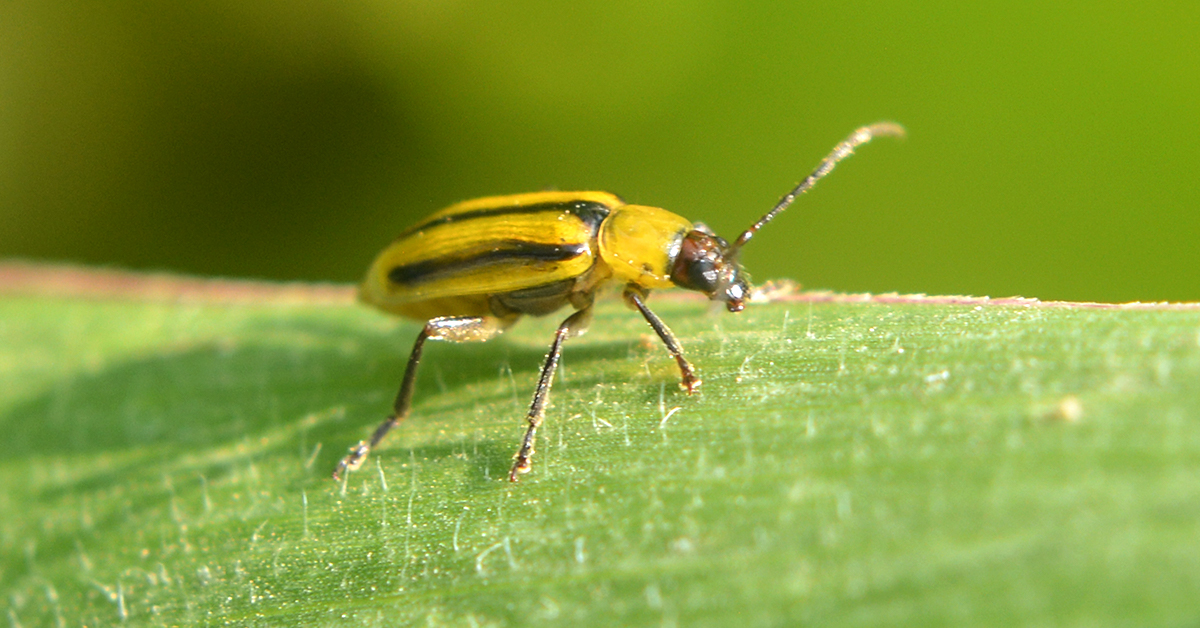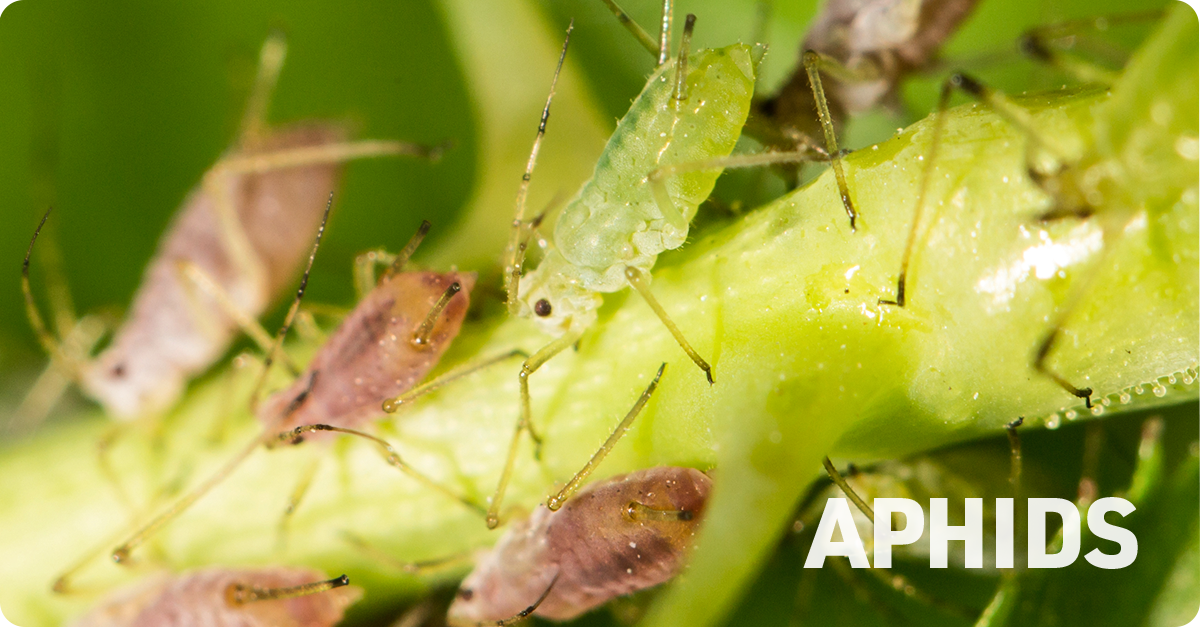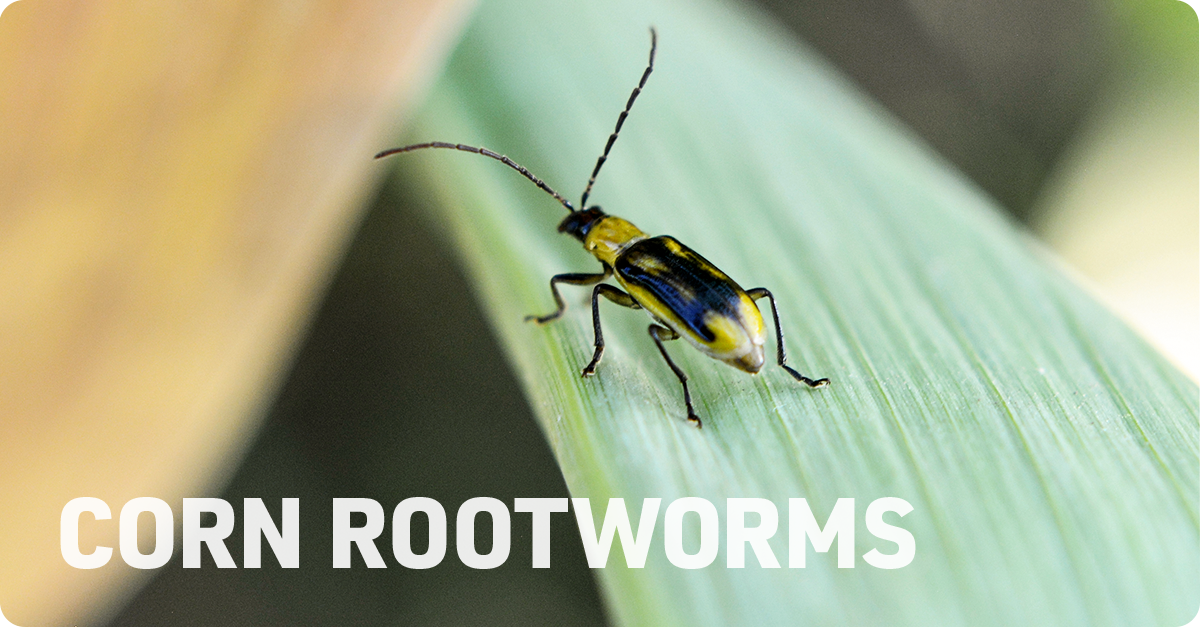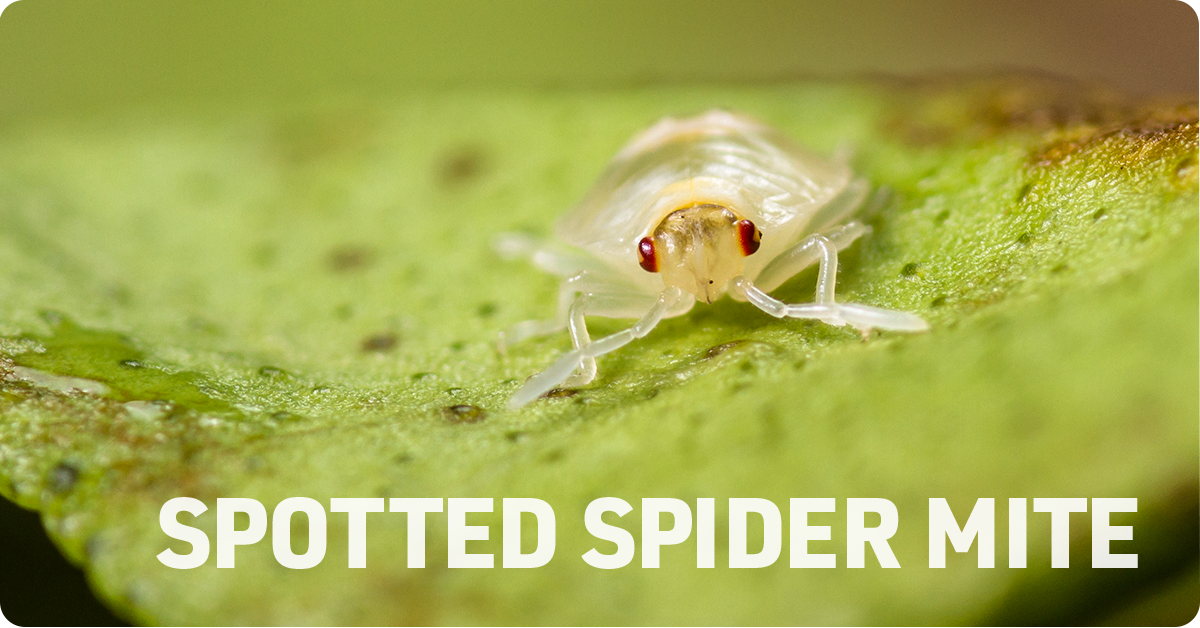
Choosing the best method of control for undesirable or pest insects in a crop is not a simple decision. Multiple factors should be considered.
Natural Predators
The first consideration is the presence of natural predators that may help control the number of pest insects by feeding on the pest insects. Beneficial insects will rarely eliminate the pests but can help limit the population and minimize damage to the crop. If action is needed to control the pest insects, monitoring the population of beneficial insects may be the best course of control.
Crop Rotation
Another factor to consider is crop rotation. Pest insects of a specific crop are seldom a pest in another crop. Some pests are best controlled by rotating the crop that is grown in a particular area. By rotating the crop, a particular pest will often die without the host crop to sustain the population.

Field Management/Cultural Practices
It is also important to consider field management or cultural practices that may limit pest insects. For example, keeping fence rows and field borders free of weeds can help limit places for pests to overwinter and build populations. In many cases, even with good management practices, crop rotation, and the help of beneficial insects, chemical control is needed.
Control Through Modes of Action
When using chemicals as control methods, regularly rotating the mode of action of the chemical is the best practice. Every chemical insecticide’s mode of action is determined by the Insecticide Resistance Action Committee (IRAC). Chemicals by different manufactures can have the same mode of action. However, rotating mode of action is needed to avoid insect resistance. The group name for the mode of action is prominently displayed on each chemical label. Chemicals in the same group use the same mode of action to disrupt the pest. To avoid pest insect resistance, the mode of action should rotate each year and for each pest generation. Additionally, using multiple modes of action during the same application will help prevent pest resistance.
Two examples of controlling pest insects with different modes of actions are with alfalfa and corn.
Mode-of-Action Example 1: Alfalfa
Alfalfa is a major crop throughout this region. Alfalfa weevil and aphids are the main pests that need to be controlled to have a successful alfalfa crop. Ladybug larvae are efficient natural predators of both pests and can limit their populations. However, chemical control is often needed to prevent crop damage from the weevil and aphid.

Chemicals from Group 1A, the carbamates (carbaryl), Group 1B, the organophosphates (chlorpyrifos, malathion, dimethoate), and Group 3A Pyrethroids (e.g., Lambda-cy, Mustang Max, Warrior, Silencer) have been available for many years. They are effective by contact with the pests and have short-term controlling benefits. Unfortunately, they also exterminate most of the beneficial insects they come in contact with. Groups 1A, 1B, and 3A are fairly inexpensive and are readily available.
On the other hand, Group 22, Indoxacarb (e.g., Steward), is a unique mode of action and highly effective for weevil only. Group 22 needs foliar absorption to be effective and is soft on beneficial insects. Group 22 is more expensive than the older groups but should be considered in the rotation to avoid resistance. To control for aphid, Group 4C, Sulfoxaflor (e.g., Transform) and Group 9D, Afidopyropen (e.g., Sefina) are both effective when foliage is present to absorb the chemistry. They are newer chemicals and are generally more expensive chemicals.

Mode-of-Action Example 2: Corn
Another example of a crop that benefits from rotating chemical modes of action to control for pest insects is corn.
One pest insect to corn is the corn rootworm. Currently, many mountain west growers plant corn hybrids that contain the Bt gene, which helps control corn rootworm, and can limit the need for pesticide chemicals.
However, mites are increasingly becoming more of a pest in corn. There are a few miticides available to control mites. Group 10B, Etoxazole (e.g., Zeal), and Group 10A, Hexythiazox (e.g., Onager), are both predominantly ovicide/larvicide controls and should be used early since they can not control adult mites. Group 23, Spiromesifen (e.g., Oberon), offers limited control on adult mites but is more effective in the beginning life stages and is therefore recommended for early use as well.

With mite control (and all harmful pests) the best approach is to be proactive, starting treatment when mites are first detected will lead to more successful control of the pest. Additionally, rotation of these modes of action is also recommended, as they all work slightly different and pest resistance is always a concern.
Conclusions
Good management practices that rotate the chemicals and modes of action should be utilized to maximize pest insect control. In short, when choosing a control method for the undesirable pests in crops the best approach is to keep changing the approach, and of course contact your closest IFA Crop Advisor for expert help managing insects and preventing resistance.
Discover IFA's Agronomy Services
Written by Todd Tolbert, CCA, Spanish Fork IFA Agronomy, and originally published in the IFA Cooperator magazine (vol. 87, no. 2) Summer 2021.
Todd Tolbert is an experienced Agronomy Sales Consultant and Certified Crop Adviser with a BS in Range Science with an emphasis on soil science from Utah State University. He has over 25 years of experience in alfalfa, corn and small grain production, with 21 of those years as a Certified Crop Adviser. Todd is passionate about working in the field alongside growers to help them meet their goals and solve their problems. When he is not working with producers, Todd is with his family outdoors, hunting, fishing, camping and backpacking.

